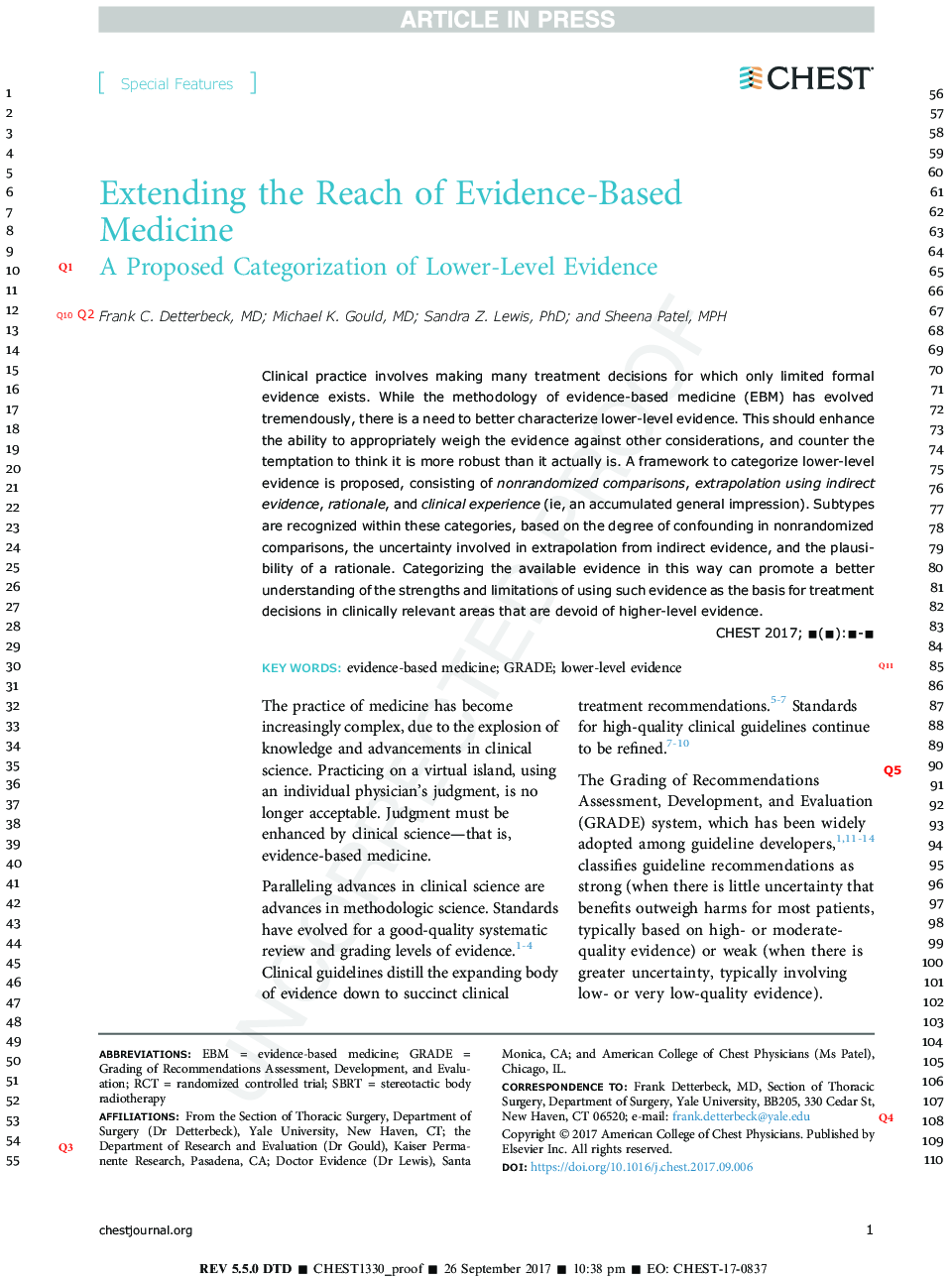| Article ID | Journal | Published Year | Pages | File Type |
|---|---|---|---|---|
| 8658042 | Chest | 2018 | 8 Pages |
Abstract
Clinical practice involves making many treatment decisions for which only limited formal evidence exists. While the methodology of evidence-based medicine (EBM) has evolved tremendously, there is a need to better characterize lower-level evidence. This should enhance the ability to appropriately weigh the evidence against other considerations, and counter the temptation to think it is more robust than it actually is. A framework to categorize lower-level evidence is proposed, consisting of nonrandomized comparisons, extrapolation using indirect evidence, rationale, and clinical experience (ie, an accumulated general impression). Subtypes are recognized within these categories, based on the degree of confounding in nonrandomized comparisons, the uncertainty involved in extrapolation from indirect evidence, and the plausibility of a rationale. Categorizing the available evidence in this way can promote a better understanding of the strengths and limitations of using such evidence as the basis for treatment decisions in clinically relevant areas that are devoid of higher-level evidence.
Keywords
Related Topics
Health Sciences
Medicine and Dentistry
Cardiology and Cardiovascular Medicine
Authors
Frank C. MD, FCCP, Michael K. MD, FCCP, Sandra Zelman PhD, Sheena MPH,
